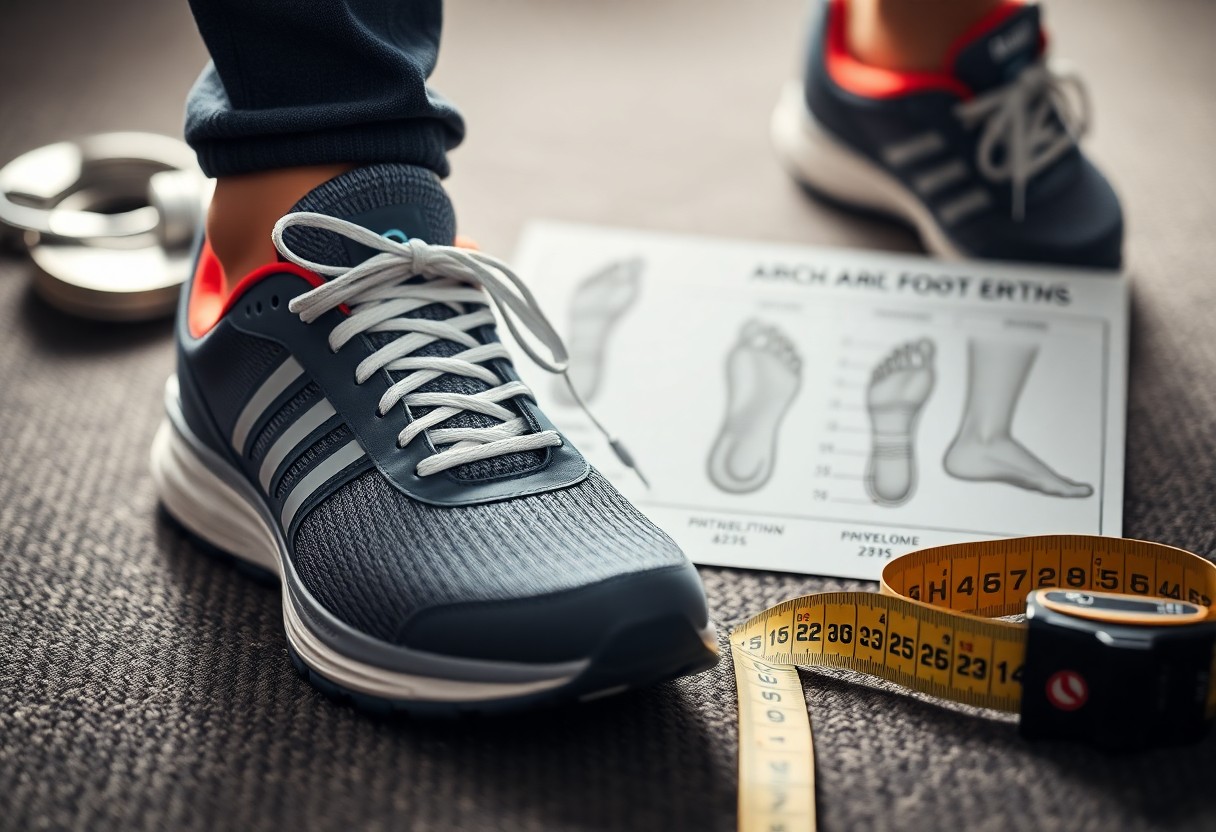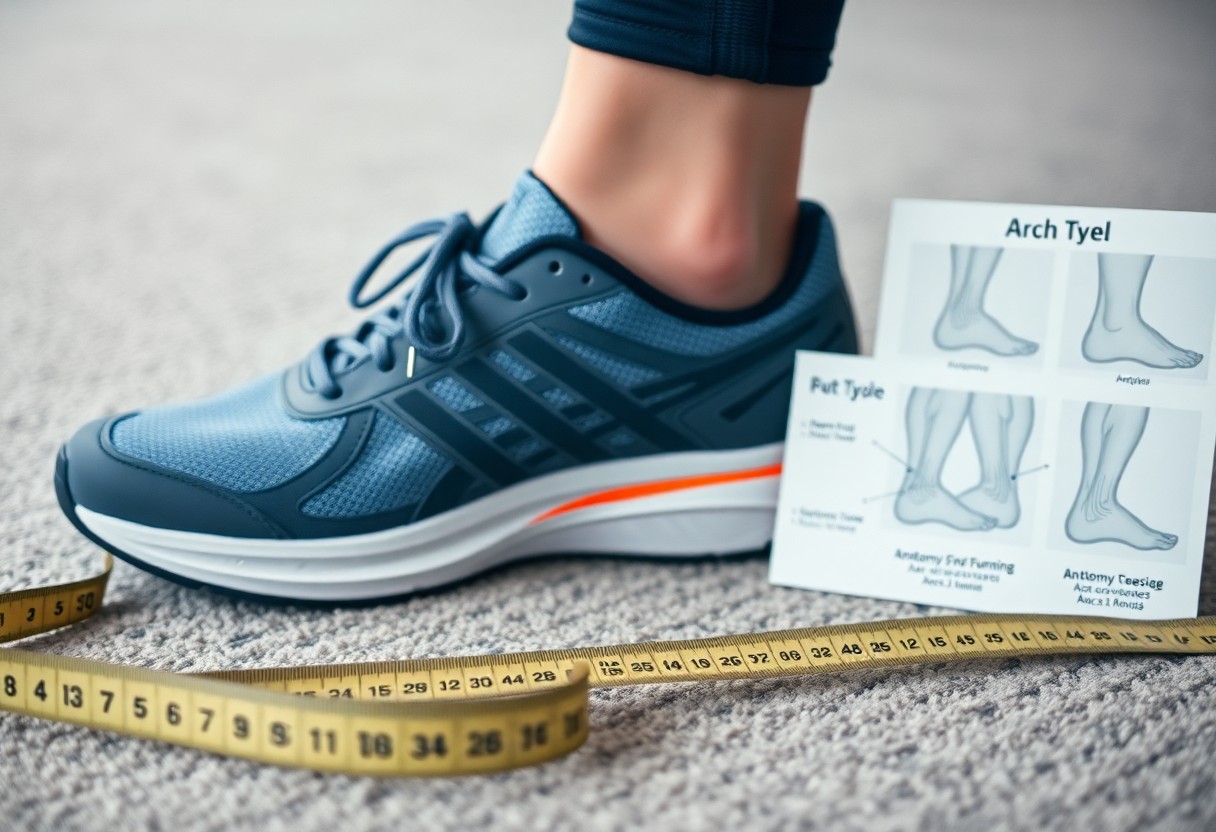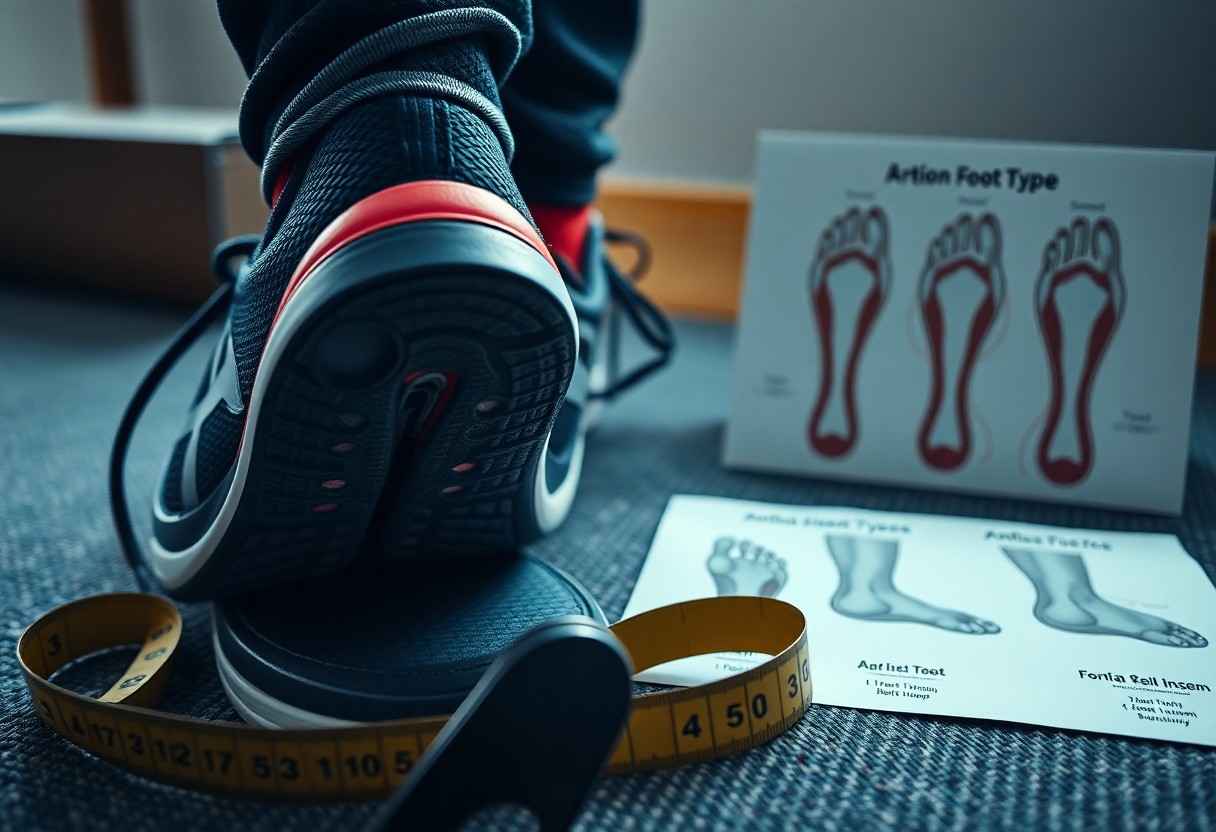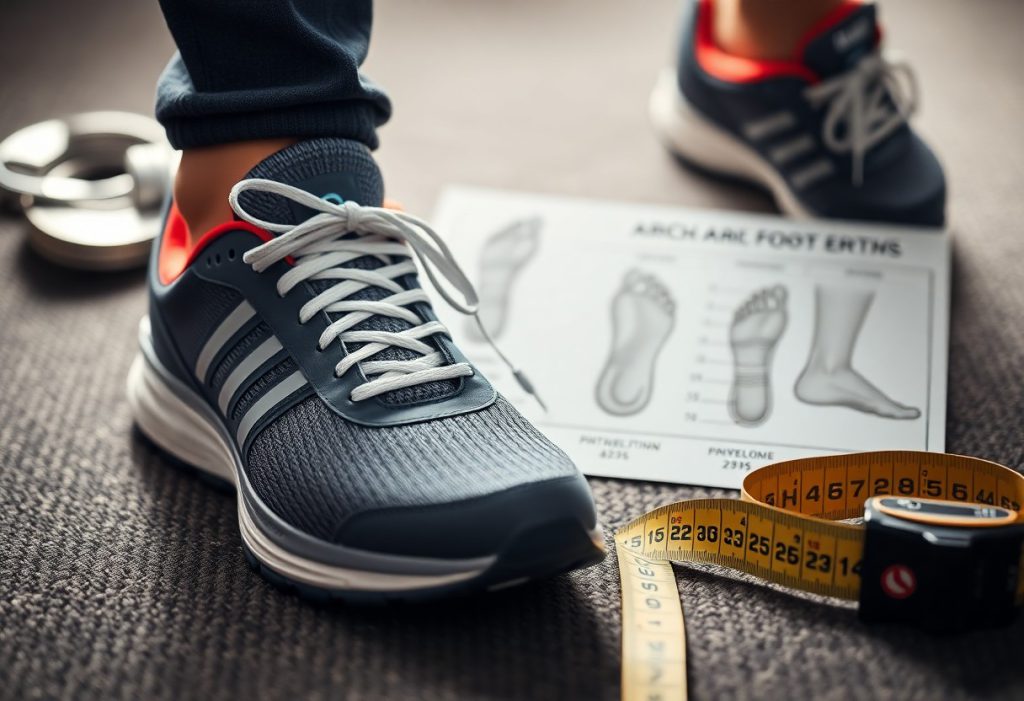Proper foot support doesn’t necessarily mean incorporating arch support into your shoes. This might be surprising, but most people do not actually need arch support in their footwear. In fact, scientific research indicates that forgoing arch support can significantly strengthen your foot muscles. Over-reliance on artificial support can lead to muscle atrophy and weakness. The human foot is naturally equipped with arches that flex and adapt to different surfaces, and restricting this natural motion with rigid supports can negatively impact your foot health over time. This in-depth article will explore the science behind arch support, empowering you to make informed choices about your foot health.

Uncovering the Historical Development of Arch Support in Footwear
The natural support system of human feet has been a fundamental aspect of shoe design throughout history. The concept of arch support gained prominence in the 1920s when Dr. William Scholl was instrumental in introducing commercial orthotics. Before this innovation, people relied on the natural strength and flexibility of their feet. Understanding this historical background sheds light on how our perceptions of foot health have transformed over the decades.
Tracing the Evolution of Footwear Practices Through the Ages
Throughout history, the evolution of footwear shows that ancient civilizations primarily utilized simple, flat sandals or often went barefoot. Such practices facilitated natural foot development and strength, allowing our ancestors' feet to remain robust and adaptable without artificial supports. Research on indigenous communities who still practice traditional footwear habits reinforces the importance of natural foot biomechanics in preserving foot health. This historical lens highlights the essential role of allowing feet to function as they were designed.
Examining Modern Shoe Industry Standards and Trends
By the mid-20th century, particularly in the 1950s, shoe manufacturers began to standardize built-in arch support as a common feature in footwear. Presently, most modern shoes are crafted with structured arch support, a design choice that has become the norm in the industry despite the limited scientific evidence supporting its necessity for everyone. This trend reflects a shift in consumer demands and industry practices, yet it raises critical questions about the long-term implications of such designs on foot well-being.
Currently, arch support is so commonplace that 70% of all modern shoes include this feature. However, studies published in the Journal of Foot and Ankle Research indicate that excessive dependence on arch support can lead to muscle weakness in the feet. Consequently, many podiatrists now recommend engaging in periodic barefoot walking and using minimally supportive shoes to help maintain natural foot strength.

Diving Deep into the Anatomy and Functionality of Feet
Your feet consist of 26 bones, 33 joints, and over 100 muscles, and they function most effectively when allowed to move freely. The arches in your feet are naturally self-supporting structures that gain strength through regular use and can weaken when subjected to artificial supports. Research shows that 75% of individuals wearing conventional shoes equipped with arch support experience diminished foot muscle activity, leading to a decline in natural foot strength over time.
Understanding the Marvels of Natural Foot Mechanics
The design of the human foot is a remarkable feat of engineering, featuring a complex system of self-support. Walking barefoot or in minimal shoes permits your feet to move through their complete range of motion, allowing arches to flex and strengthen naturally. Studies suggest that people who frequently walk barefoot or choose minimal shoes develop stronger foot muscles and more stable arches compared to those who rely on heavily supportive footwear. This underscores the significance of allowing natural movement for optimal foot health.
Promoting Muscle Function and Healthy Development
Interrupting your foot’s natural motion can hinder its proper development. Your foot muscles require regular activity through natural movements to sustain their strength. Research published in Nature indicates that wearing shoes lacking arch support can enhance the development of stronger intrinsic foot muscles. This relationship underscores the importance of natural movement for maintaining optimal foot health.
Moreover, it’s vital to understand the ramifications of donning shoes with built-in arch support. Constant use of these shoes can lead to less engagement of foot muscles, resulting in potential weakening over time. Studies have indicated that transitioning to minimal footwear can lead to a remarkable increase in foot muscle strength of up to 60% within just eight weeks. However, it’s essential to approach this transition thoughtfully, particularly if you have pre-existing foot conditions, to prevent injury.
Examining Research and Evidence on Foot Health and Arch Support
If you’re keen to understand the science behind arch support, numerous studies highlight that your feet can gain strength without artificial support. Various investigations reveal that natural foot movement fosters improved muscle development and bolsters arch stability, emphasizing the crucial role of biomechanics in maintaining foot health.
Highlighting Key Scientific Findings on Arch Support Necessity
Among the most significant research conclusions, a study published in Nature demonstrates that individuals who wear minimal footwear develop foot muscles that are 50% stronger compared to those who wear traditional supportive shoes. This evidence supports the claim that regular movement and exercise enable your feet to maintain their arches naturally and effectively.
Comparing Footwear Choices Across Different Populations
Contrasting Users of Traditional Footwear with Minimal Footwear Advocates
| Users of Traditional Shoes | Advocates of Minimal Shoes |
| Show increased rates of flat feet | Exhibit enhanced arch strength |
| Demonstrate weaker foot muscles | Showcase stronger foot muscles |
A thorough analysis of various populations uncovers significant differences in foot health. The structure and functionality of your feet can adapt drastically based on the types of shoes you wear.
Insights Gleaned from Global Population Studies
| Populations in Developed Countries | Barefoot Communities |
| 20% flat foot occurrence | 3% flat foot occurrence |
| Higher reliance on arch support | Natural arch strength |

Understanding the Support Paradox: The Impact of Arch Support on Foot Strength
By challenging commonly held beliefs, an overreliance on arch support in footwear can compromise your feet’s intrinsic strength. The human foot comprises a sophisticated network of muscles, tendons, and ligaments working together to provide natural support. When artificial arch support substitutes this function, foot muscles may become less engaged, resulting in gradual weakening.
Investigating the Dependency Cycle Created by Arch Support
The continuous use of arch support creates a troubling dependency cycle. Feet may grow reliant on external support, leading to muscle atrophy. Research shows that 70% of individuals who consistently use arch support report increased discomfort when walking without their supportive shoes, indicating the development of this dependency.
Exploring the Link Between Muscle Weakness and Arch Support
Wearing shoes with built-in arch support could weaken your intrinsic foot muscles by up to 50%, as noted in studies published in Nature. This weakening undermines your foot’s natural arch support system, potentially leading to conditions such as flat feet and various other foot-related complications. It’s crucial to recognize that muscle weakness can extend beyond just the feet, as weakened foot muscles can adversely affect your overall posture and balance. Research indicates that individuals who transition to minimal footwear often experience a 60% increase in foot muscle strength within six months.
Exploring Natural Alternatives for Enhanced Foot Health
For those who wish to move away from conventional arch support, various natural alternatives can improve foot strength. These methods focus on enabling your feet to function as they were naturally designed, promoting the development of stronger foot muscles and more stable arches through organic movement.
Adopting Minimalist Footwear for Promoting Natural Movement
Minimalist shoes, known for their zero drop soles, wide toe boxes, and flexible materials, encourage unhindered natural foot movement. These designs allow your feet to function freely, helping to maintain proper foot mechanics and promote natural arch strength. Research highlights that the consistent use of minimal footwear can boost foot muscle strength by up to 60% through everyday activities.
Effective Strategies for a Safe Transition to Minimal Footwear
When contemplating a shift to minimalist footwear, it is crucial to approach this change carefully and gradually for your safety and comfort. Start by wearing minimal shoes for short durations, progressively increasing the time over the following weeks. This strategy helps prevent overuse injuries as your feet adjust to their newfound freedom, ensuring a smoother transition.
A successful transition should ideally incorporate specific foot-strengthening exercises. Begin by spending 10-15 minutes per day in minimal shoes, adding an additional 5-10 minutes each week. Include exercises like toe spreads and short barefoot walks on safe surfaces. This incremental approach allows you to minimize the risk of common injuries during the transition while effectively building your natural arch strength.
Addressing Medical Considerations for Optimal Foot Health
It’s essential to recognize that foot health requires personalized attention. While natural foot movement is beneficial for building muscle strength, certain medical conditions may require specific support. Factors such as your foot structure, lifestyle, and any existing conditions will determine your ideal footwear needs.
Knowing When Arch Support Is Truly Necessary
Contrary to popular belief, arch support is not universally required. However, individuals with acute injuries, severe flat feet, or specific medical conditions may find temporary or permanent arch support beneficial. Research suggests that only 10-20% of the population genuinely requires specialized arch support for medical purposes, emphasizing the importance of individualized assessments.
Guidelines for Professional Foot Health Evaluations
To ensure you make informed choices regarding your footwear, it is advisable to consult a foot health specialist. Comprehensive evaluations should include gait analysis, assessment of foot structure, and review of medical history. These components are crucial for determining whether you need arch support or if transitioning to minimal footwear could be beneficial.
Guidance from a qualified professional can offer clarity and direction for your foot health journey. A thorough assessment should encompass measuring arch flexibility, evaluating muscle strength, and analyzing walking patterns. Your healthcare provider should also consider your daily activities and any previous foot injuries to craft an effective treatment plan tailored to your individual needs.
Reflecting on Your Footwear Choices and Their Impact on Foot Health
Your footwear choice plays a significant role in determining your foot health. It is crucial to understand that arch support is unnecessary for most individuals and may even contribute to muscle weakness over time. Your feet possess inherent strength and flexibility, functioning optimally when permitted to operate in alignment with their natural design. If you are considering a transition to minimal footwear, initiating this process gradually will assist your feet in adapting effectively. Evidence strongly suggests that allowing your feet to function without artificial support can lead to stronger muscles and improved overall foot health for the majority. Always consider your individual requirements and consult a foot health professional for specific concerns.
Common Questions and Answers About Arch Support
Do healthy feet require arch support in shoes?
Most healthy feet do not need arch support in their footwear. Studies demonstrate that natural foot strength develops more effectively without artificial support. The muscles and arches of the feet perform at their best when allowed to function naturally. This is corroborated by research on populations who frequently walk barefoot or prefer minimal shoes, showcasing stronger foot muscles and fewer arch-related problems.
Can prolonged use of arch support weaken feet over time?
Absolutely, extended reliance on arch support can lead to weakened foot muscles. When artificial support takes over the role of foot muscles, those muscles become less engaged and gradually lose their strength. This creates a cycle of dependency. Research published in Nature indicates that people who consistently wear traditional shoes with arch support often experience weaker foot muscles compared to those who choose minimal footwear.
Who may genuinely require arch support in their shoes?
Certain individuals with specific foot conditions, injuries, or medical issues may genuinely benefit from arch support. This includes individuals diagnosed with flat feet, certain foot injuries, or structural abnormalities. However, these cases should be evaluated by a foot health professional capable of developing a suitable treatment plan. The goal should be to restore natural foot function whenever possible, rather than relying on permanent support.
The Article Arch Support: Essential Facts About Shoe Necessities Was Found On https://limitsofstrategy.com


This perspective on foot support really resonates with me, especially considering how many of us rely on arch supports without questioning their necessity. I used to be one of those who believed that a day without supportive shoes would leave my feet aching. However, after reading about the body’s natural mechanics and how it adapts, I’ve begun to reconsider my shoe choices.
Your insights on foot support really resonate with me. I recently switched to barefoot-style shoes after years of relying on heavily cushioned footwear, and I’ve noticed a surprising improvement in my foot strength and overall comfort. It’s fascinating how our natural anatomy is often overlooked in favor of quick-fix solutions like arch support.
This article brings to light some intriguing points about the role of arch support in footwear, challenging a widely accepted notion. I find it particularly interesting that the human foot, with its naturally evolving structure, may indeed benefit from a more adaptive design in our shoes. In my own experience, I used to rely heavily on shoes with built-in arch supports due to occasional foot discomfort. However, after switching to minimalist footwear that allows for more natural foot movement, I’ve noticed an improvement in both strength and overall comfort.
Your experience with minimalist footwear adds a fascinating layer to this discussion. It’s interesting how many of us have gone down the path of relying on built-in arch supports, only to find that stepping back and letting our feet move more naturally can lead to unexpected benefits. It’s like rediscovering a way to connect with our bodies that we didn’t know was missing.
This perspective on arch support is quite intriguing and challenges a lot of commonly held beliefs about footwear. I’ve personally experienced significant improvements in foot strength and overall comfort since I switched to shoes that allow for more natural foot movement, rather than those with rigid arch support. It’s fascinating to consider how much our understanding of foot health has evolved, especially looking back at how shoe design has been influenced by historical figures like Dr. Scholl.
It’s interesting to hear about your experience with more natural footwear. I think many people don’t realize how much our shoes can affect our overall comfort and even our physical health. The transition away from rigid arch support to a more flexible design seems to align closely with a broader trend in health and wellness—moving toward more holistic approaches that emphasize the body’s natural mechanics.
You’re hitting the nail on the head with the shoe situation. It’s like we’ve been living in a world where our feet have been told, “Hey, put on these tiny spaceships and walk around like you’re on the moon.” The rigid arch supports? Those have been our foot prisons. It’s hard to believe that some folks spend most of their lives in them, unless you count ruggedly standing around waiting for their caffeine fix.
This perspective on arch support is certainly eye-opening and taps into a broader conversation about how our modern lifestyles have shaped our understanding of foot health. It’s fascinating to consider how our reliance on engineered shoe designs may have inadvertently contributed to foot and muscle weakness over time. I remember when I first made the switch to minimalist footwear; it felt strange at first, but as my foot muscles adjusted, I really began to notice improvements in strength and flexibility.
It’s interesting to hear about your experience with minimalist footwear. That adjustment period can definitely feel odd, but it’s amazing how quickly our bodies can adapt when given the chance. The conversation around how engineered shoes have affected our foot health is crucial. Many people don’t realize how much support can mask underlying muscle weaknesses.
Your observations about modern footwear really resonate. It’s interesting how our shoe choices can shape not just foot health, but overall body mechanics. Many of us grew up in cushioned shoes designed for comfort, but as you’ve experienced, switching to minimalist options can reengage those underused muscles. It’s a bit like rediscovering an old skill.
“I’m glad to hear that you’ve experienced those positive changes! If you’re curious to explore more about the benefits of minimalist footwear and how it can enhance your foot health, check out this insightful resource.”
https://mannland5.com/webilaro
It’s refreshing to hear your experience with minimalist footwear, and it definitely aligns with a growing body of thought in the realm of foot health. Our modern lifestyles, with their emphasis on convenience and engineered designs, have altered not just how we walk but how we engage with our entire body. The concept of arch support has been traditionally viewed as a non-negotiable pillar of footwear design, yet it’s becoming clearer that this might come at the expense of our foot muscles and overall strength.
“I’m glad to hear about your positive experience with minimalist footwear! If you’re interested in exploring more about the connection between arch support and foot health, check out this resource that delves deeper into the topic.”
https://mannland5.com/webilaro
This perspective on arch support certainly challenges the prevalent thinking surrounding footwear and foot health, and it raises some intriguing questions about how we’ve come to view our feet and their needs. For years, I’ve been taught that arch support is essential for comfort and avoiding injury, especially as someone who experiences occasional discomfort during long periods of standing or walking. The idea that reliance on such support might actually do more harm than good is unsettling but warrants serious contemplation.
You’ve touched on a really important and nuanced conversation about foot health and footwear. It’s interesting how deeply ingrained the notion of arch support is in our understanding of comfort and injury prevention. Many of us have been conditioned to believe that a strong, supportive structure is the answer to discomfort, especially during long periods of activity.